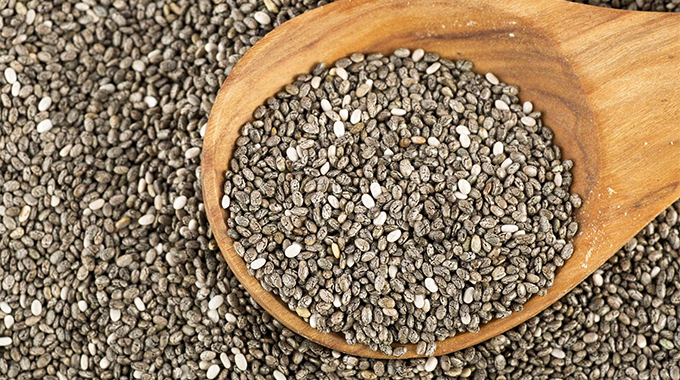Communal farmers turn to small grains to beat climate change effects

Thupeyo Muleya-Beitbridge Bureau
The Government and its partners through the Zimbabwe Resilience Building Fund (ZRBF) are helping farmers around the Beitbridge district with skills and inputs to grow small grains of high market value as a way of adapting to the effects of climate change.
Over the years, agricultural seasons have been altered with the focus turning to the production of crops with a shorter maturity period that requires little rains.
Beitbridge requires 450mm of rain for a successful cropping season, but of late the semi-arid area has been receiving little rain due to the obtaining climatic conditions.
So far, 450 communal farmers in Beitbridge have been trained under the ZRBF project on the growing and sorting of chia for the local ad export markets.
Pieces of training for more people have been lined up. Chia seeds contain quercetin, an antioxidant that can reduce people’s risk of developing several health conditions, including heart disease.
The seeds are also high in fibre, which can help to lower high blood pressure and, in turn, reduce your risk of developing heart disease. Chia seeds are high in fibre.
It is understood that the crop can be grown between January and July and can mature within four months compared to other crops which need longer periods.
During an assessment of a demo plot at the 57 hectares Jalukange Irrigation Scheme, in Beitbridge West, the Acting District Agriculture Extension services officer, Mr Ophias Ndlovu said the Government had engaged the Chia Growers Association of Zimbabwe to implement the project.
Under the model, the farmers are trained, supplied with inputs and are linked with the local markets before they break even and stand alone.
“We are making a breakthrough with many farmers now embracing the growing small grains as another way to adapt to climate change,” said Mr Ndlovu.
“However, some farmers tend to deviate from the agreed programme mostly due to the effects of quelea birds which forced them to turn to bigger grains like maize.
So far, we are making a breakthrough since some have season value in growing small grains of high market value like chia. They are gradually moving from subsistence to commercial farming”.
Chia Growers Association of Zimbabwe, Mr Brian Dumbu said they started training farmers two years ago and were expecting the number of growers to increase with time.
He said so far they had trained 6 000 people countrywide and that production was gradually peaking.
Mr Dumbu said already they had markets in the United Kingdom and Belarus in terms of exports.
“Those planting the crop under irrigation have been doing well while those on dry land farming are doing fairly good.
For now, we are providing inputs and the market for them, we expect individual tines to start by producing at least one tonne and grow gradually,” he said.
Mrs Bettina Ndou of the Jalukange area said they were excited at the prospect of getting high returns from growing chia which does not require a lot of inputs other than seeds, water, and organic manure.
She said they were looking at improving the income revenue streams at the household level from the proceeds derived from growing cash crops.
In terms of maize production, she said was usually done for individual consumption, but now they were growing chia with a target market that has not been adequately supplied.
“Growing chia and other small grains is a seamless process,” said Mrs Nomsa Moyo from the same area. “We are happy that the government has come up with an alternative plan for us to contain the devastating effects of climate change








Comments